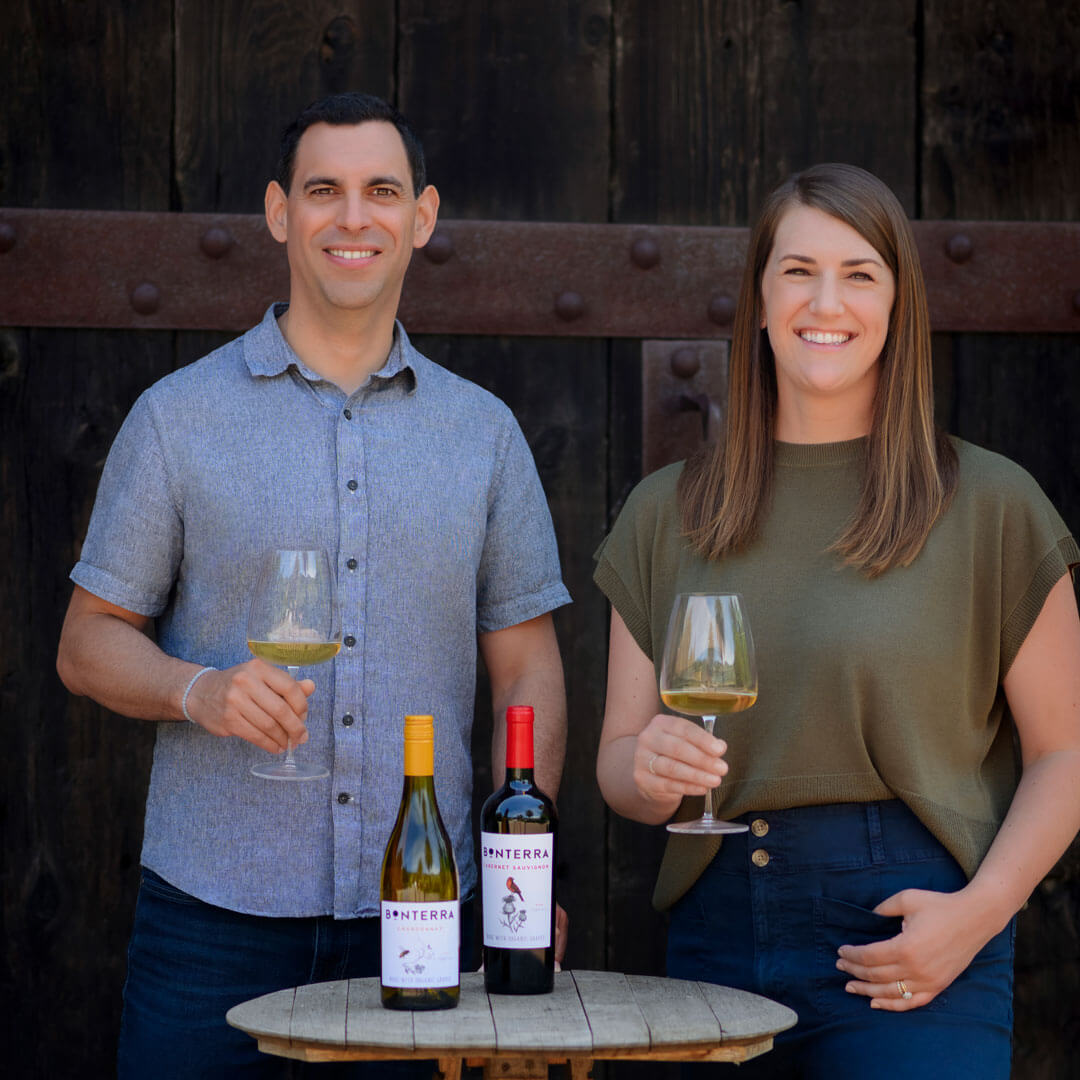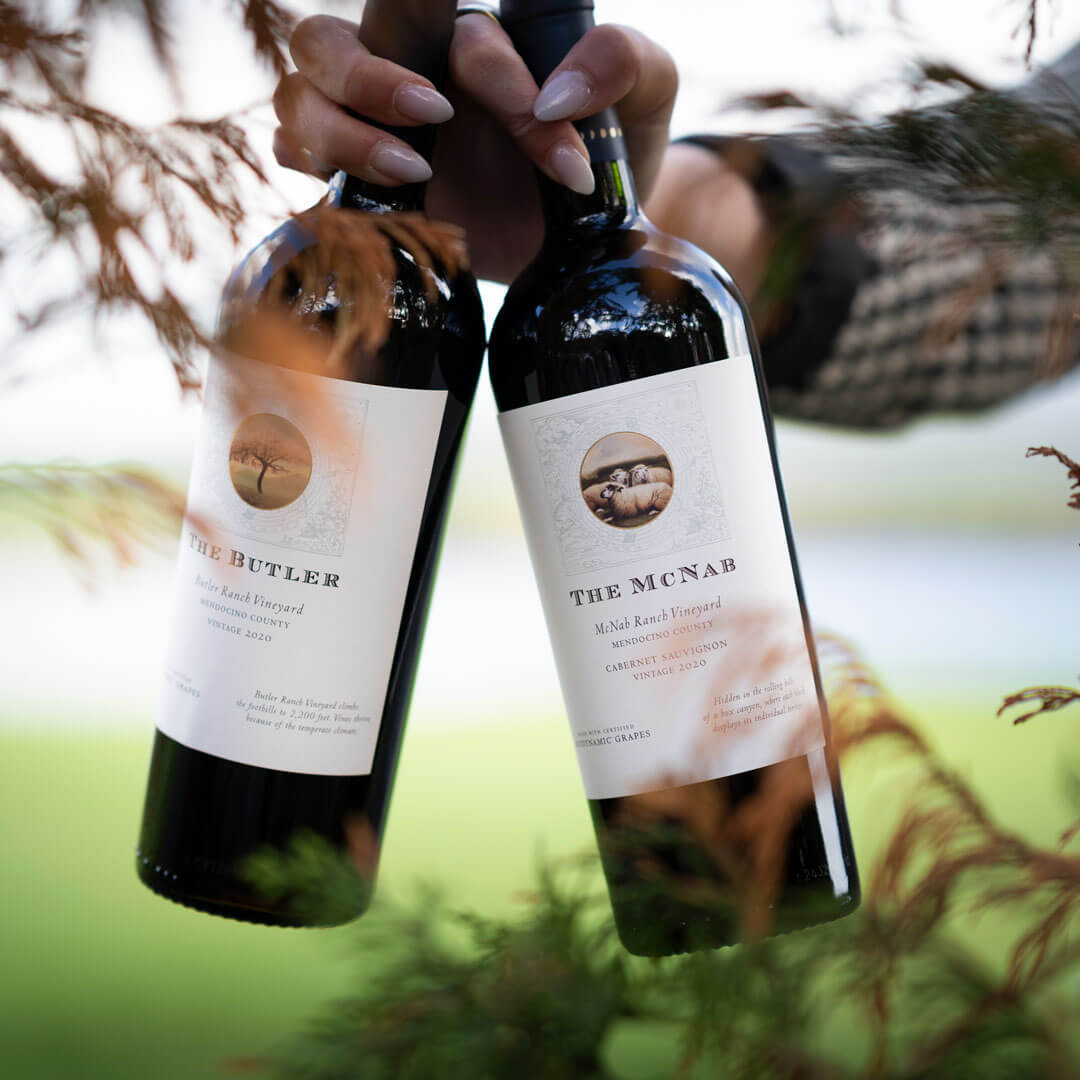Cabernet Sauvignon is one of the best-known, most revered, and widely consumed red wines on Earth. But why is that? And what does Cabernet Sauvignon actually taste like?
In this post, we’ll dive into the typical flavor profiles and sweetness levels of Cabernet Sauvignon, discussing how they change from region to region, and answering common questions about this famous red wine type.
What is Cabernet Sauvignon?
Cabernet Sauvignon is a variety of red wine grape that originated in the Gironde region of southwestern France. Thanks to modern-day DNA analysis, we now understand that Cabernet Sauvignon is the genetic offspring of Cabernet Franc and Sauvignon Blanc. (Yes! White grapes can have red offspring, and vice versa).
This grape is now widely planted in its hometown region of Gironde (which includes Bordeaux wine – probably the most famous Cabernet Sauvignon producing region in the world), where it is commonly blended with Merlot, Cabernet Franc, and sometimes Petit Verdot, Malbec and Petite Sirah. Due to global admiration for Bordeaux’s famous Cabernet-based wines, the grape was then used to plant vineyards all around Europe, in the Americas, and across Australia. While planted in a variety of soils and climates today, Cabernet Sauvignon tends to grow best in temperate regions, with well-draining gravel soils and good exposure to sun and air to ward off disease.
Cuttings of Cabernet Sauvignon were brought from Bordeaux to Chile in the 19th century, before the phylloxera louse destroyed virtually all of Europe’s vineyards; that country now produces both ageworthy, collectible Cabernets like Don Melchor, as well as fruity, easy-to-love versions enjoyable in their youth. Italy also embraced Cabernet Sauvignon with open arms, blending it with Sangiovese and Merlot to create a whole new category of wines called Super Tuscans. And, of course, Napa Valley in California is now virtually synonymous with Cabernet Sauvignon made in a rich, ripe, velvety style.
Cabernet’s small, thick-skinned berries impart powerful tannins, deep color and relatively high acidity to the juice, which is what allows wine to age well for years – decades, in some cases. Because the grape ripens late in the season, colder climates have difficulty achieving full ripeness before fall weather sets in, and typically will blend in more generous, “fleshy” grapes like Merlot to balance out the austere tannins and acid of Cabernet. In warmer climates, Cabernet Sauvignon develops rich, fruity and almost chocolatey notes that reduce the need for blending and let producers keep Cab at center stage.
The Flavor Profile of Cabernet Sauvignon
The taste of Cabernet Sauvignon wine depends on where the grapes were grown and how they were fermented and aged. In general, though, Cabernet produces wine with aromas of blackcurrant, blackberry (in warmer climates), plum and cedar. Cooler climate Cabernet Sauvignon often has an herbaceous edge and higher acid level. Wine storage can also affect the flavor notes of your red wine, so be sure to follow proper storage guidelines and check your bottles before enjoying.
Cabernet Sauvignon wines almost always have robust tannins, which create a drying sensation in the mouth when young, and soften as the wine gets older. When aged in oak barrels, Cabernet gains some complexity from the wood itself – adding aromas like clove and vanilla – as well as from the passage of time, which tends to reveal secondary aromas like leather and tobacco. Some winemakers age Cabernet in clay amphora or other neutral vessels, which allows the wine to mature and evolve without adding the spicy wood notes that new oak brings.
Bonterra creates three different expressions of Cabernet Sauvignon, offering a Cab for every occasion. Our award-winning Bonterra Cabernet Sauvignon is a casual weeknight sip, crafted from organically grown Cabernet Sauvignon and small amounts of Petite Sirah and Malbec from across California. This generous, medium-bodied Cab showcases black cherry and blackcurrant fruit aromas, with subtle notes of leather, tobacco and pencil shavings.
Our Estate Cabernet Sauvignon is sourced from two of our Regenerative Organic Certified® estate vineyards in Mendocino County – Butler Ranch and Blue Heron Ranch. Butler’s austere high-elevation conditions and Blue Heron’s fertile riverine soil combine to create a truly dynamic, balanced wine. Six months of aging in 100% French oak, only 40% of it new, brings complex barrel notes to the finished wine as well as greater depth and texture. This Cab is a special treat after a long week.
When it’s time for a special occasion, our Single Vineyard ‘The McNab’ Cabernet Sauvignon is the Cabernet to reach for. Sourced exclusively from our Regenerative Organic Certified McNab Ranch Vineyard in Mendocino County, this wine blends 80% Cabernet Sauvignon with 20% Petite Sirah for an exceptionally complex, elegant and ageworthy bottling. Sweet blackcurrant combines with plums, mocha, cedar, cloves, vanilla bean and a touch of summer berry bramble. Fine, firm tannins support a generous fullness on the palate, and carry the wine through a finish of mint tea and black fruits.
Can’t decide which you’ll prefer? Keep all three of these Cabs on hand with our Cabernet Sauvignon Collection Bundle!
Is Cabernet Sauvignon Sweet or Dry?
Many people get confused with wine terminology around sweet and dry. Cabernet Sauvignon is typically a dry wine, meaning it contains less than 10 grams per liter of residual sugar (sometimes called “RS” on tech sheets) after fermentation. While many Cabernets suggest sweet fruit aromas and flavors when we smell and taste them (e.g. plum, berries, fig, etc.) there is actually virtually no sugar in most of them. Cabernet Sauvignon is typically very dry, at 0-4 g per liter of residual sugar. That’s under 2 calories of sugar in every five-ounce pour!
Of course, not all Cabernet is made with high-quality, organically grown fruit like Bonterra. Some brands keep higher levels of sugar in their wines in order to mimic the experience of tasting sweet fruit that has fermented to dryness. These sweeter red wines can have 12-15g per liter of residual sugar – which puts them in the “off-dry” category of wines, one step sweeter than “dry” at 10-35 grams per liter RS.
Pairing Cabernet Sauvignon with Food
Cabernet Sauvignon has a strong personality thanks to its robust tannins and intense flavors, and it can sometimes be tricky to pair well with food that isn’t a grilled steak or a meaty stew. Tannic wines need a fair amount of fat and salt to avoid overwhelming the food, and they create an unpleasant metallic taste when paired with fish and seafood flavors. However, it’s not so difficult to prepare vegetables and proteins in a way that will complement Cabernet Sauvignon.
Cab’s black fruit flavors and velvety texture pair beautifully with roasted vegetables, smoked foods, and rich bean stews, particularly when seasoned with cumin, pepper, fennel, basil, mint, sage, rosemary, or cinnamon. Five-spice powder is another spice affinity, making this wine variety a tasty choice for richer proteins prepared in an aromatic marinade. Cabernet’s relatively high acidity makes it a good match for umami-rich dishes like amatriciana pasta, roasted mushrooms, and recipes featuring fermented sauces like miso, doubanjiang and gochujang (so long as it’s not too spicy; higher alcohol wines fuel the flames of spicy food, wiping out flavor nuances). For lovers of sweets, Cabernet pairs beautifully with dark chocolate, complimenting the wine’s robust flavor with the bitterness of the chocolate.
As you put together your own Cabernet pairings, remember to include a generous amount of fat, especially if the tannins are young and powerful. Intense cheeses like sharp Cheddar are a great match, going toe to toe with Cabernet’s intensity and richness. A final splash of finishing oil, like pumpkinseed or extra virgin olive oil, can also sometimes be the missing link you need to make your Cab pairing sing.
Appreciating Cabernet Sauvignon
From bone dry Bordeaux to opulent California Cab, the world has a wealth of different Cabernet Sauvignon styles to enjoy. Pick up a bottle from a new region or producer and see how they are interpreting this famously elegant red grape. They might surprise you! There are many pockets of cooler climate in warmer regions, and as many ways to make and age Cabernet Sauvignon as there are winemakers. Don’t be afraid to try something totally new!
At Bonterra Vineyards, we take pride in crafting exceptional, organically grown Cabernet Sauvignon that showcases the best of what this grape has to offer. Each bottle is a testament to our organic wineries‘ commitment to quality and sustainability. Buy wine online through Bonterra today!
Explore our Cabernet Sauvignon wine and consider joining our wine club for exclusive access to our latest releases and special offers. Cheers to enjoying the finest Cabernet Sauvignon!




